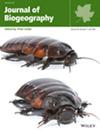The Rise (and Fall?) of European Water Shrews: Phylogeography and Species Distribution Models Uncover the Impact of Climate Change
Abstract
Aim
Predicting the effects of climate change on species distributions, while considering their genetic differentiation and evolutionary history is crucial to develop conservation measures. Here we aim to: assess the phylogenetic and phylogeographical relationships between the European Neomys species and respective lineages; infer the demographic history of all genetic lineages and estimate the potential impact of future climate change on their distribution and persistence of the genetic lineages.
Location
Europe.
Time Period
The demographic analysis ranges from 350,000 ago to the present. The future climate change scenarios modelling ranges from the present to 2100.
Major Taxa Studies
Three species belonging to the genus Neomys.
Methods
We reconstructed the phylogenetic relationships between the species in Europe and unveiled their demographic history based on cytochrome b gene sequences while using presence data to model how their distribution might change under distinct climate change scenarios.
Results
Our results confirm the existence of a distinct N. milleri lineage in the Italian Peninsula, whose population size has been relatively constant over time. Except for this lineage, all species' populations have likely been increasing until at least 25,000 years ago. While our future projections are beneficial to N. milleri, relatively inconsequential to N. fodiens, but suggest the likely extinction of N. anomalus, endemic to the Iberian Peninsula and the Italian lineage of N. milleri.
Main Conclusions
The Mediterranean Peninsulas, acting as refugia from the extreme cold conditions during the Last Glacial Period, contributed to the genetic differentiation of N. anomalus and the Italian lineage of N. milleri. However, as climate warms, the Peninsulas will no longer be able to sustain these species/lineages. Given the Peninsulas' status as biodiversity hotspots, this vulnerability of their ecosystems to climate change should mobilise conservation efforts guided by phylogeographic approaches, allowing us to uncover putative lineages or endemisms before their potential extinction.

 求助内容:
求助内容: 应助结果提醒方式:
应助结果提醒方式:


